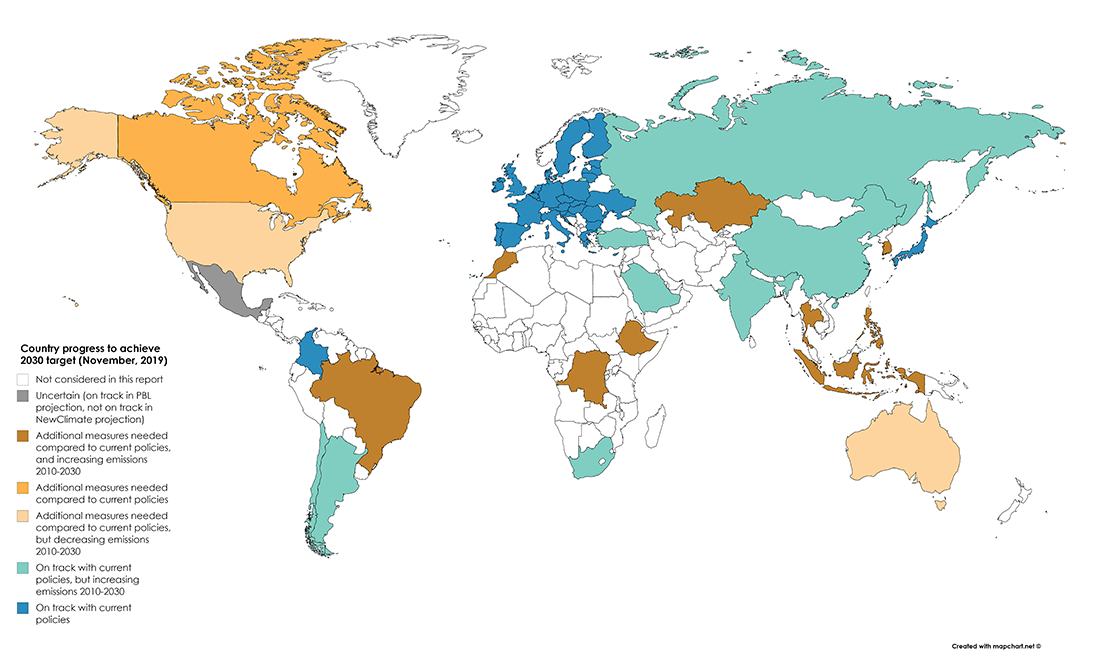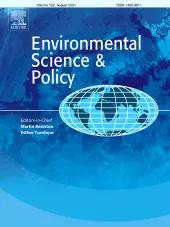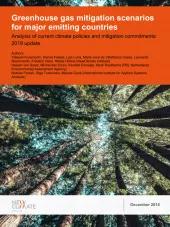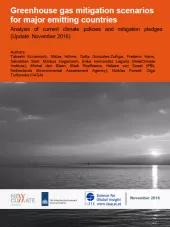This report by NewClimate Institute, PBL Netherlands Environmental Assessment Agency and the International Institute for Applied Systems Analysis (IIASA) provides an overview of projected greenhouse gas (GHG) emissions in 25 major emitting countries/regions up to 2030, taking into account the emission trajectories based on current policies and the implementation of nationally determined contributions (NDCs). The report concludes that 12 out of the 25 countries and regions analysed are not on track to achieve the NDC targets they have set for themselves. This report updates the 2018 report, and for the first time presents additional key indicators next to greenhouse gas emissions.
About half of the 25 major emitting countries still not on track to achieve targets set in NDCs
The 2019 update takes into account policy developments since the 2018 report and latest historical greenhouse gas emissions data. The degree to which the 25 major emitting countries are likely to achieve their NDC targets under current policies was found to vary (see Figure), similar to last year’s report.
- Of those considered in this report, Argentina (new in this category, compared to our 2018 report), Chile (new), China, Colombia, EU28 (new), India, Japan (new), Russian Federation, Saudi Arabia, South Africa (new), Turkey, and Ukraine are likely or roughly on track to achieve or even overachieve their self-determined unconditional 2025/2030 targets with currently implemented policies.
- For Mexico, the achievement of 2030 targets was found to be uncertain with implemented policies.
- The other 12 countries require additional measures to achieve their 2025/2030 targets.
- Argentina is now assessed as being on track to achieve its NDC, because of lower projections for economic growth and LULUCF emissions.
- Chile is now assessed as being on track, due to the inclusion of the Electromobility Strategy and the first stage of the coal phase-out plan.
- Japan is now assessed as being on track due to the higher share of renewables in the electricity mix.
- South Africa is now assessed as being on track because of the updated Integrated Resource Plan as well as the revised (lower) historical emissions data.
- The EU, finally, is now assessed as being on track due to the consideration of a full implementation of the Clean Planet for all Europeans policy package.
Half of thirteen major emitting economies show progress on 2030 emissions projections
The report also assessed how countries’ current policies scenario projections have changed since 2015, when the Paris Agreement was adopted. The comparison with our 2015 report, which covered thirteen countries, shows that seven countries (Australia, Canada, China, EU, Japan, Turkey and the United States) show lower emissions projections for 2030; for the remaining seven countries (Brazil, India, Indonesia, Mexico, Republic of Korea, Russia) the projections were either similar or even higher. 








